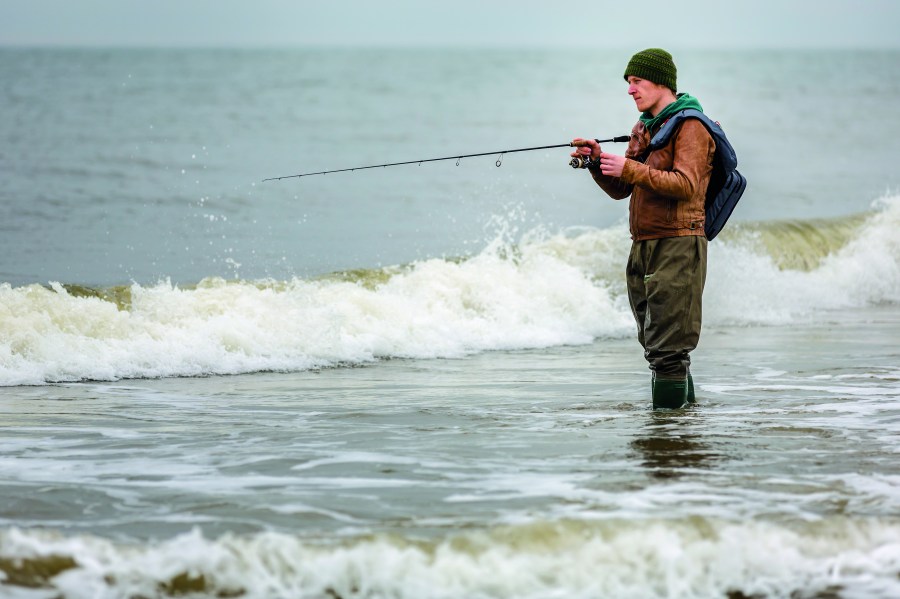 The angler who hasn’t mastered his knots is at a disadvantage before the first cast is even made. If the connection between your lines and the various components connected to them is not sound how can you fish with any confidence that you can rely on them when you really need to? Losing a rig or lure is one thing. Losing a PB or specimen fish is quite another. You can prevent this by making sure that your knot technique is in tip-top shape. That is why it is important that the essential knots you use, the knots you use most frequently or in most circumstances, can be tied quickly, easily and well.
The angler who hasn’t mastered his knots is at a disadvantage before the first cast is even made. If the connection between your lines and the various components connected to them is not sound how can you fish with any confidence that you can rely on them when you really need to? Losing a rig or lure is one thing. Losing a PB or specimen fish is quite another. You can prevent this by making sure that your knot technique is in tip-top shape. That is why it is important that the essential knots you use, the knots you use most frequently or in most circumstances, can be tied quickly, easily and well.
THE BASICS
Before you get started with tying knots there are a number of basic things that you need to have in order: The condition of the line; Always check your line for damage, otherwise you will still be empty-handed – no matter how well and strong the knot is tied. `Pay due attention to the finishing of the knot. This starts with pulling it tight. Do not do this with a jerk. Moisten the line with some saliva reduce the heat damage from friction which is released when finishing the knot. Lubricate it before slowly tightening the knot. Not only does this make the line glide easier but it fits better and is more compact. Finally, trim the knot by finishing the ends neatly. Many knots with long tag ends eventually lose strength after repeated contact with the rod guides. Finally, always test the knot before you start fishing. Tight lines!
**YOU CAN’T BUY KNOTS READY-MADE IN THE TACKLE SHOP, SO MAKE SURE YOU KNOW HOW TO TIE THEM WHEN YOU NEED THEM**
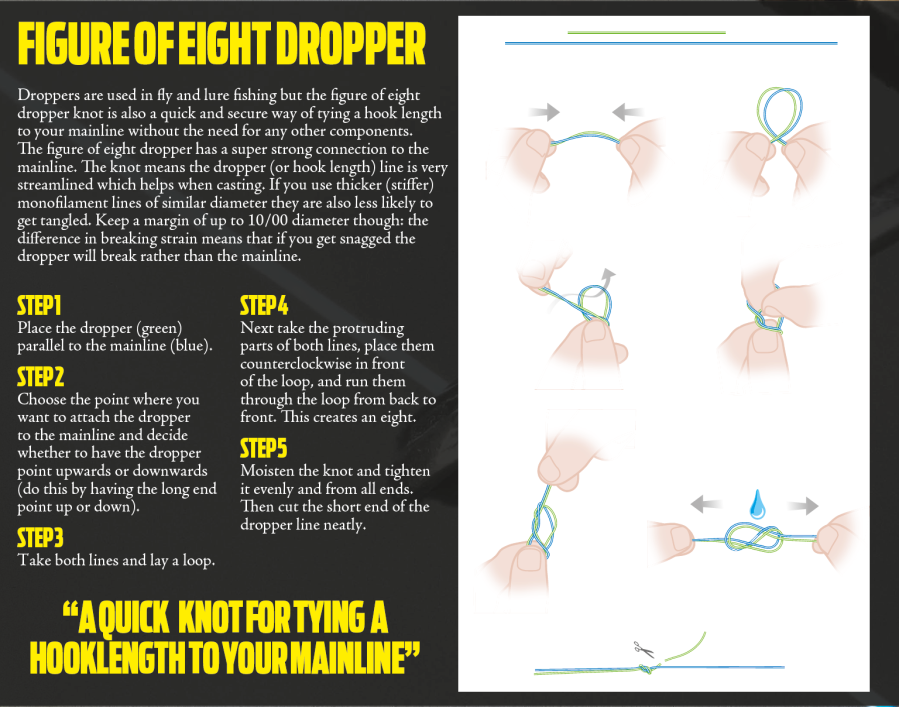
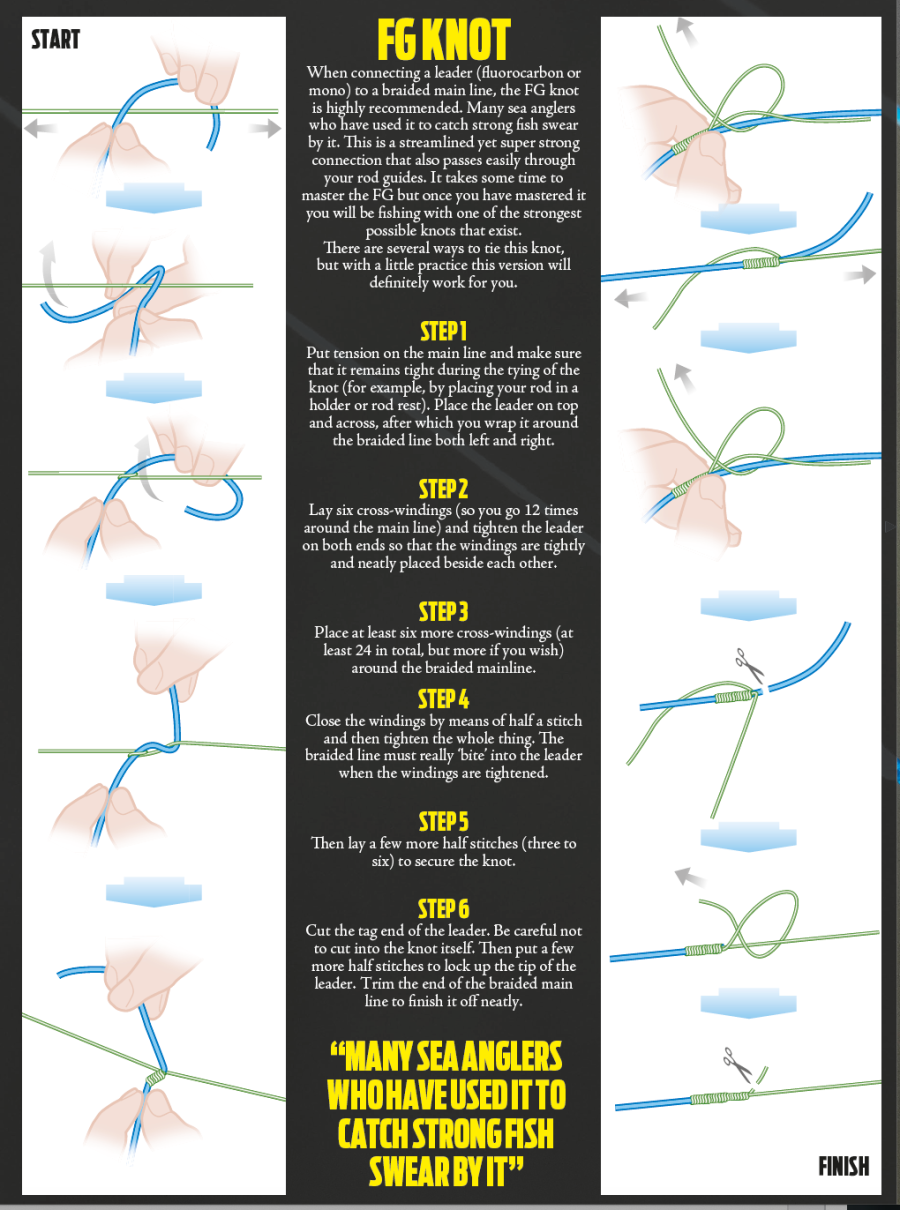
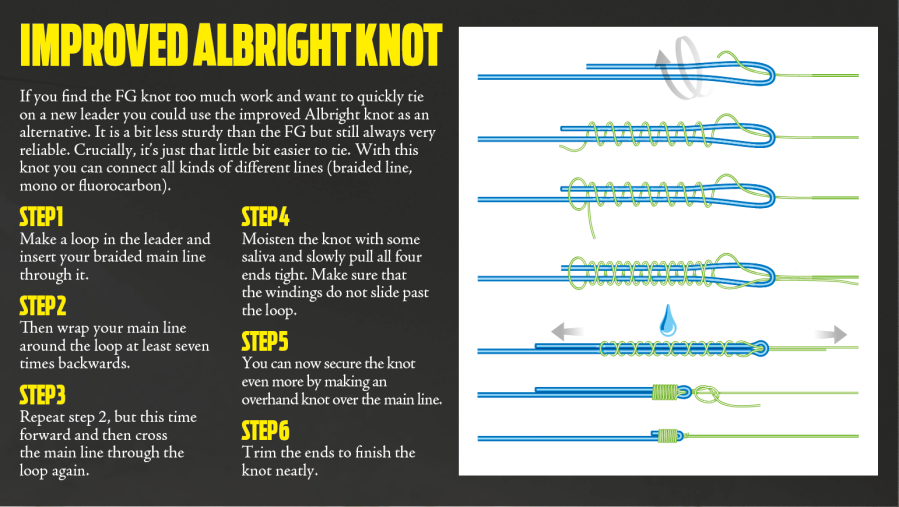
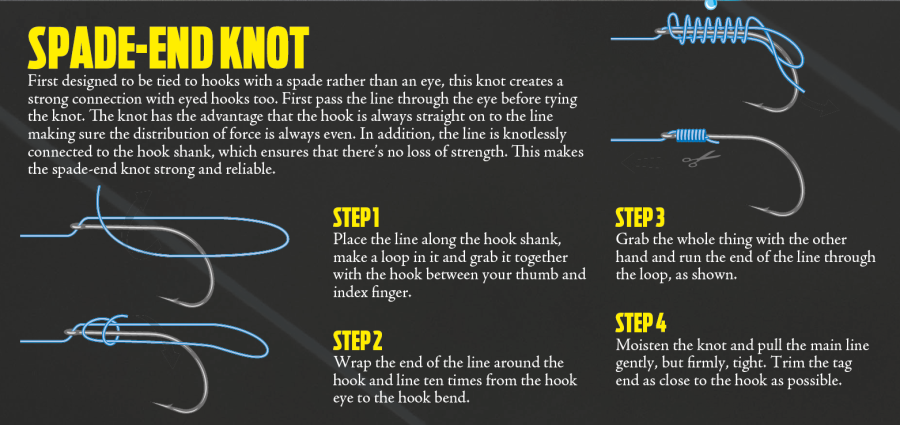
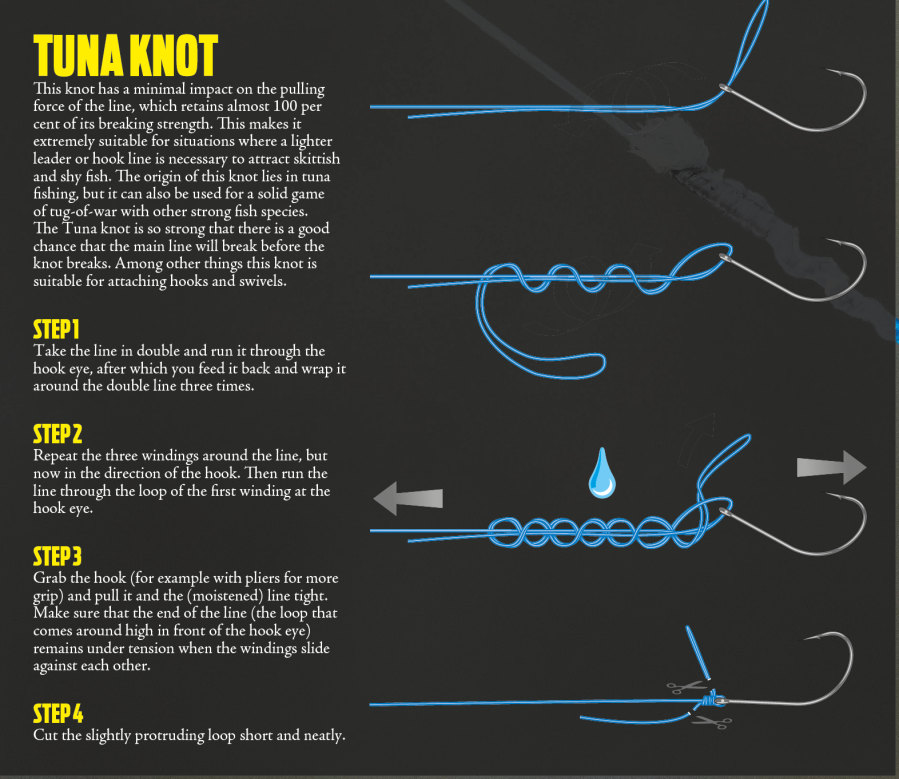
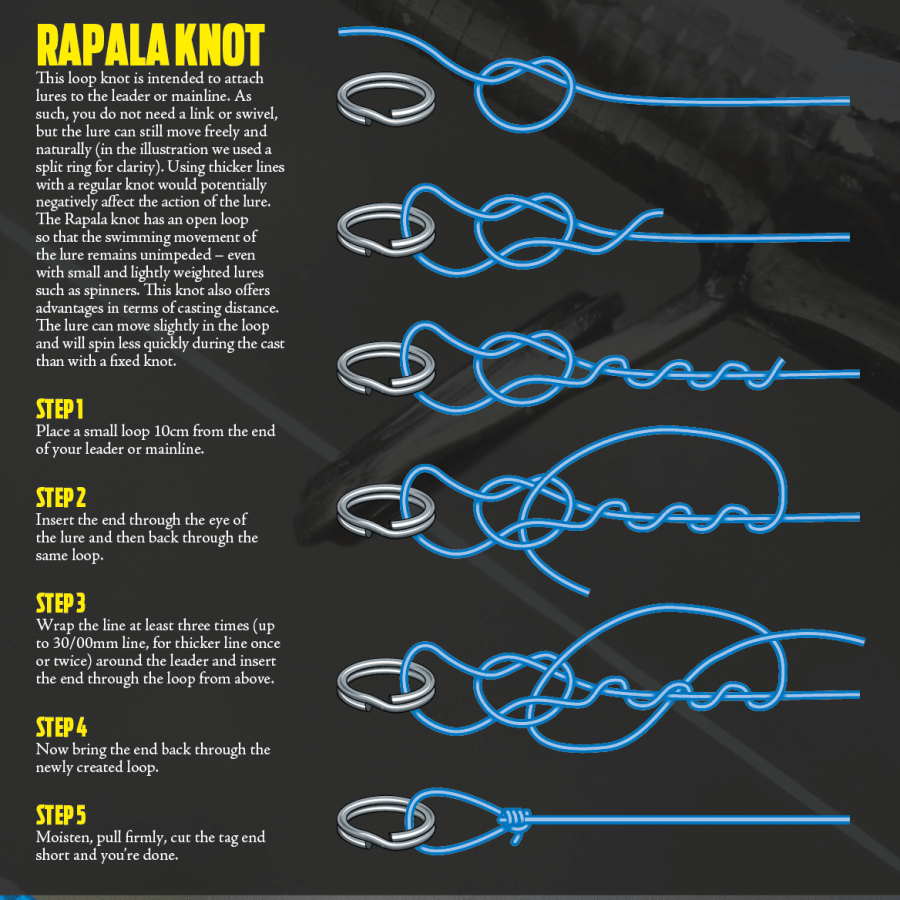
Words by Joran Bal, Illustrations by Emiel van Dijk






